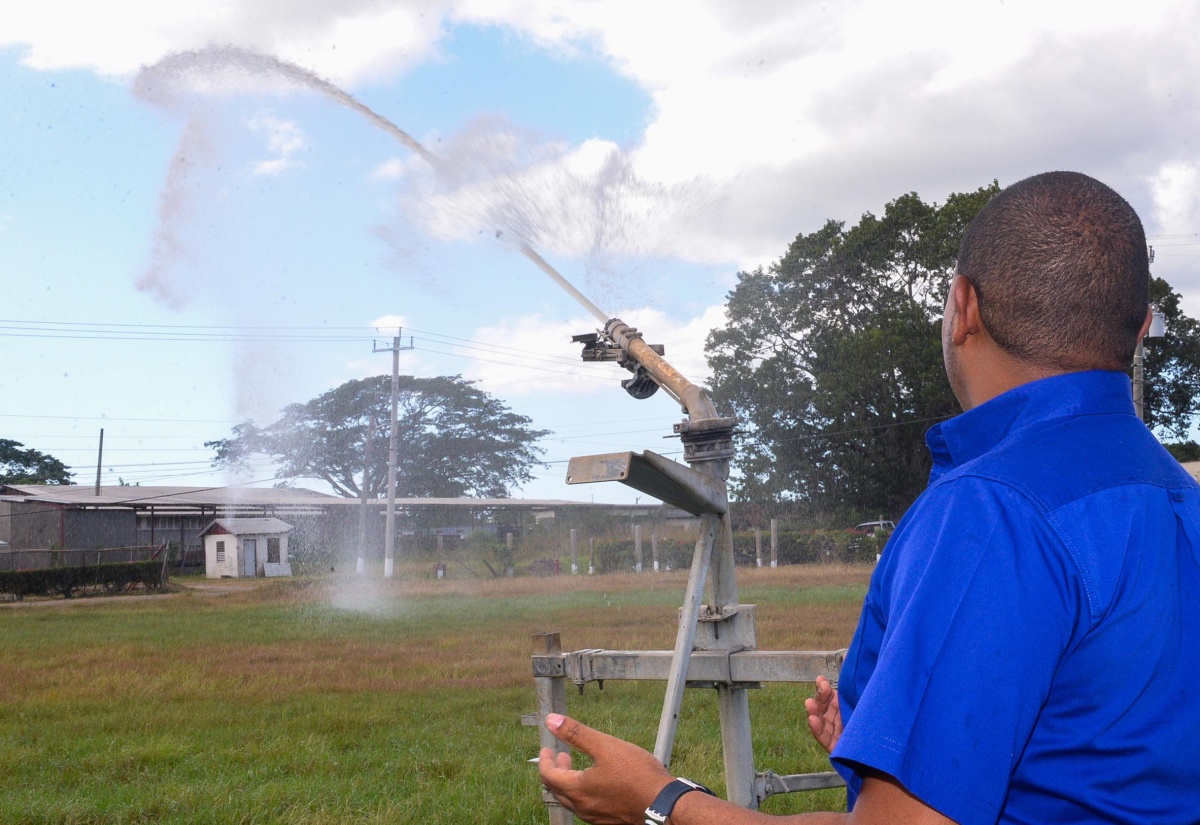Seven Additional Irrigation Travellers Acquired for Bodles Agricultural Research Station
By: , January 30, 2025The Full Story
Seven additional irrigation travellers, valued approximately $35.37 million, have been acquired by the Ministry of Agriculture, Fisheries and Mining for the Bodles Agricultural Research Station in St. Catherine.
These are expected to aid in significantly increasing the size of livestock pastures at the facility from 168 to 400 acres.
The five Type 100 R2/1A and two Type 100 R2/1B travellers, which were handed over on Wednesday (January 29), bring the number procured for the research station to 12.
They were acquired under phase two of the Rehabilitation of Research Centres Project, which will also include renovation of the irrigation system serving the small ruminants pasture at Bodles.
The initial five travellers were provided under the project’s first phase.
An irrigation traveller, also known as a water traveller or irrigation reel, is a piece of agricultural equipment used to efficiently water crops over large areas. It comprises a long hose wound around a drum that moves across the field, distributing water as it goes.
Portfolio Minister, Hon. Floyd Green, who addressed the handover ceremony, highlighted the significance of the equipment.
“To put it into perspective, prior to acquiring these seven additional travellers, we were operating with five, which enabled us to irrigate 25 acres per day, totalling 175 acres per week, as each irrigation traveller has the capability of delivering an average of 11.5 gallons of water per second on a five-acre pasture,” he outlined.
The project’s first phase saw increased growth rates and yields and a shorter harvesting cycle of the pastures as well as improved soil quality at the station, which greatly contributed to fodder and forage production.
“We were able to produce over 2,000 bales of hay and over 60 tonnes of silage while also being able to produce forage for cut and carry and grazing, even amidst the challenges posed by Hurricane Beryl and the heavy rains the island experienced during the last three months of the year,” Mr. Green pointed out.
“Now that we have the additional seven travellers, we will significantly increase our irrigating capacity, consequently boosting our fodder and forage production. These 12 travellers will now enable us to irrigate a total of 60 acres per day. This increase in irrigation capacity will raise our forage and fodder production by at least 75 per cent, from 2,000 bales of hay to at least 3,500 bales and from 60 tons of silage to over 100 tonnes,” the Minister added.
Other anticipated outcomes are increased efficiency in using water resources and an overall improvement in the sector’s ability to adequately address the impact of climate change on livestock production and facilitate sustainable livelihoods.
Additionally, the increased quantity and improved quality of forages grown through the use of these travellers will facilitate the introduction of different varieties of grass and forage crops, expanding research in that area.
Phase one of the Rehabilitation of Research Centres Project commenced in April 2018, with phase two getting under way in June 2024.



